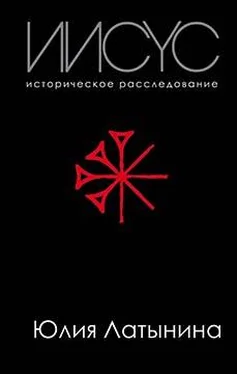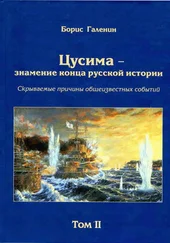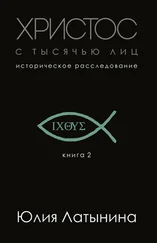Richard Elliot Friedman. Указ. соч., p. 75.
Thomas Römer. The Invention of God, Harvard University Press, 2015, p. 147.
Синодальный перевод — 131:2.
Richard Elliot Friedman. Указ. соч, ch.6.
Israel Finkelstein. The Bible Unearthed, Simon and Schuster, 2001, p. 107.
Adam Zertal. Has Joshua’s Altar Been Found on Mt. Ebal? Biblical Archaeology Review, 11:01, Jan-Feb 1985.
James H. Breasted. Ancient Records of Egypt, Vol No.4, (1906), p. 198–199.
Marvin H. Pope. El in the Ugaritic Texts, Brill, 1955, p. 34–35.
C. F. — A. Schaeffer. Les Fouilles de Ras Shamra-Ugarit. Huitieme campagne. Syria. vol. 18 (1937). pl. XVII ( ANEP , pl. 493).
Frank Moore Cross. Canaanite Myth and Hebrew Epic, Harvard University Press, 1973, p. 36.
Frank Moore Cross. Указ. соч., p. 19; Mark S. Smith. The Early History of God: Yahweh and the Other Deities in Ancient Israel, Grand Rapids: Eerdmans, 2002, p. 38.
Frank Moore Cross. Указ. соч., p. 39.
Там же, p. 26.
Иосиф Флавий. Иудейские древности, 15, 7, 9.
Lauren A. S. Monroe. Israelite, Moabite and Sabaean War-ḥērem Traditions and the Forging of National Identity: Reconsidering the Sabaean Text RES 3945 in Light of Biblical and Moabite Evidence, Vetus Testamentum , Vol. 57, Fasc. 3 (2007), p. 318–341.
Julius Wellhausen. Prolegomena to the history of Israel, NY, 1957, p. 440.
Mark S. Smith. Указ. соч., p. 96.
CAT 1.IV 46, The Ugaritic Baal Cycle, Supplements to Vetus Testamentum, vol. 114, Brill, 2009.
P. Skehan. «A Fragment of the „Song of Moses“ (Deut. 32) from Qumran», Bulletin of the American Schools of Oriental Research 136 (1954):12–15.
William G. Dever. Did God Have a Wife?; в: Archaeology and Folk Religion in Ancient Israel , Grand Rapids, Michigan, 2005; Saul M. Olyan. Asherah and the Cult of Yahweh in Israel, Atlanta: Scholars Press, 1988; Judith M. Hadley. The Cult of Asherah in Ancient Israel and Judah: Evidence for a Hebrew Goddess, Cambridge University Press, 2000.
John Day. Asherah in the Hebrew Bible and Northwest Semitic Literature, Journal of Biblical Literature, Vol. 105, No. 3 (Sep., 1986), p. 391.
K. Kenyon. Digging up Jerusalem, London, 1974, p. 142.
Синодальный перевод — 81:1.
Синодальный перевод — 88:7–9.
Синодальный перевод — 67:18.
Avigdor Shinan, Yair Zakovitch. From Gods to God, The Jewish Publication Society, 2012, p. 193.
Thomas Römer, The Invention of God, Harvard University Press, 2015, p. 154.
Patrick D. Miller. The Religion of Ancient Israel, Westminster John Know Press, 2000, p. 61.
О битве Яхве с чудовищами см.: Umberto Cassuto. A Commentary on the Book of Genesis: From Adam to Noah, Jerusalem: Magnes Press, 1973–1975; John Day. God’s conflict with the dragon and the sea, Cambridge University Press, Cambridge, 1985; Avigdor Shinan and Yair Zakovitch. Указ. соч.
* Синодальный перевод — 73:13–14.
Синодальный перевод — 88:26.
John Day. God’s Conflict with the Dragon and The Sea, p. 142.
Филон Александрийский. О жизни Моисея, 1, 155–8.
Eusebius. Praeparatio Evangelica, 29.
Margaret Barker. Gate of Heaven: The History and Symbolism of the Temple in Jerusalem, London: SPCK, 1991, p. 134–135.
* Синодальный перевод — 109:1.
Синодальный перевод — 44:7–8.
Israel Finkelstein, The Bible Unearthed, Simon and Schuster, 2001 p. 186–191.
Israel Finkelstein, Указ. соч., p. 169.
Там же, p. 133.
Там же, p. 235.
Там же, p. 257.
Richard Elliot Friedman, Who Wrote the Bible? p. 74
Richard Elliot Friedman. Указ. соч., p. 201.
Там же, p. 188–207.
Zéev Herzog, Miriam Aharoni, Anson F. Rainey and Shmuel Moshkovitz, The Israelite Fortress at Arad, Bulletin of the American Schools of Oriental Research, No. 254 (Spring, 1984), p. 1–34.
Климент Александрийский. Строматы, 1, 23.
Иосиф Флавий. Иудейские древности, 4, 8, 48.
Sotah, 13b.
Иосиф Флавий. Указ. соч., 2, 9, 4.
Shemot Rabbah, 1, 20.
Иосиф Флавий. Указ. соч., 2, 9, 2.
Eusebius. Praeparatio Evangelica, 9, 23.
Филон Александрийский. О жизни Моисея, 1, 155–158.
Иосиф Флавий. Указ. соч., 4, 8, 48.
Анналы Сеннахериба, цит. по: «Я открою тебе сокровенное слово». Пер. В. Якобсона. М., 1981.
Adam Zertal. Has Joshua’s Altar Been Found on Mt. Ebal? Biblical Archaeology Review, 11:01, Jan-Feb 1985.
Baruch Halpern. From Gods to God, Mohr Siebek, 2009, p. 339–245; Israel Finkelstein. Указ. соч., p. 247.
Patrick D. Miller. The Religion of Ancient Israel, Westminster John Know Press, 2000, p. 61.
Leroy Waterman. The Camouflaged Purge of Three Messianic Conspirators, Journal of Near Eastern Studies, 13, no. 2 (Apr., 1954): p. 73–78.
Richard Elliot Friedman. Who Wrote The Bible? p. 218.
Yitzhak Magen, Bells, Pendants, Snakes and Stones, A Samaritan temple to the Lord on Mt. Gerizim, Biblical Archaeology Review, 36:6 November/December 2010.
Точная дата строительства Храма на горе Геризим является одной из важнейших дат в истории евреев. Ее значение невозможно преуменьшить. Как мы уже сказали, евреи и самаритяне имеют, не считая незначительных разночтений, одну и ту же Тору. Это значит, что Тора появилась в своем нынешнем виде еще до разделения на евреев и самаритян, то есть до строительства Храма на горе Геризим. Если он действительно начал строиться в середине V в. до н. э., тогда гипотеза Ричарда Эллиота Фридмана о том, что окончательным редактором Торы был Ездра, не может быть верной. Тогда Тора была отредактирована несколько раньше, а редактура Ездры ограничилась несколькими вставленными абзацами, например, процитированным выше — про аммонитян и моавитян. В любом случае тот факт, что Храм на горе Геризим начал строиться в V в. до н. э., совершенно дискредитирует модные «минималистские» теории, утверждающие, что Тора была окончательно написана чуть ли не во III–II вв. до н. э.
Читать дальше
Конец ознакомительного отрывка
Купить книгу









